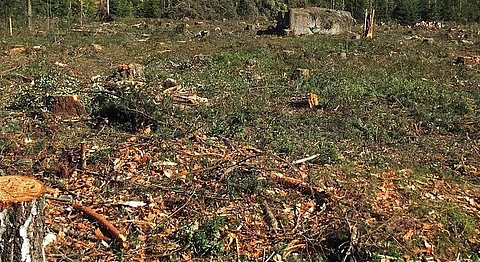
- #HGCREATORS
- #HGEXPLORE
- #HGVOICES
- #HGSHOP
- CAREERS
- ABOUT US
- CONTACT US

For the first time in the history of forest protection in India, the government is green lighting projects around wildlife areas, without any deliberation and formal approval from a panel of wildlife experts. A sum of Rs. 45,000 per hectare, dubbed as the ‘wildlife management fee’ is the price that project developers have to pay to speed up the process of acquiring reserved land for their ambitious projects.
This harebrained policy has left wildlife activists scandalized. Not assessing development plans thoroughly before giving approvals could in the near future lead to a drastic increase in cutting of trees, pollution and encroachment in the habitats of endangered species like tigers and elephants. It could also cause inbreeding or extinction of rare species that get disturbed by commercial development activities in quiet forested areas.As per a report by The Hindustan Times, the ministry in contradiction believes that availability of this new fund will instead aid for wildlife conservation. As forest departments face a perpetual fund crunch, this new mandate from the Forest Advisory Committee (FAC) will not only help increase funds but also speed up project approval rates. The project developers may have to pay additional fees for cutting off trees and also taking into account the value and propensity of land.Nityanand Jayaraman, writer and social activist, outraged by the mandate from the environment ministry said, “Wildlife management fee is the most creative and idiotic excuse the government is citing to conceal their ulterior motives. They have got the people of this country fooled into thinking that conservation is happening at all. This is clearly a case of returning favours to big business magnates and corporate houses that supported the ruling party during the elections.”
He was miffed by the environment minister’s lack of drive to protect our forests, water and wildlife too. “43,000 for a hectare of forest land is not even remotely close to enough to curb the impending damage that awaits with this move. This govt. doesn’t feel accountable to its people and the state of forests. By far, in the history of Indian democracy, the last and the current ministers of environment are the worst, corrupt and completely anti-environment, anti-wildlife, anti- indigenous people,” he said.

Previously, three instances suggest that the FAC has not kept the best interests of forest and wildlife conservation in mind. As per the same Hindustan Times report, the FAC in August 2016 allowed mining in Odisha’s Sukinda mineral zone that is in the middle of a corridor used by endangered species such as elephants, pangolin and sloth bear.The second instance being when mining approval was given to Tata Steel close to an elephant habitat in Keonjhar district of Odisha. The third one in February 2016 Chamoli district of Uttarakhand, where 252 MW hydel project is being built in the ecologically sensitive Himalayan region. Despite the presence of rare animals like Himalayan Tahar, black bear, snow leopard and musk deer, the FAC approved the project after imposing the levy charges.All of this is enough to derive that the FAC is up to dubious activities that are far removed from prioritising safeguarding of forests and wildlife. There has always been a tense battle between the government, which often gets swayed in the direction of economic development and the faint voices of activists who protest against big conglomerates encroaching the natural habitats of animals. A ‘fine’ or a straight forward ‘bribe’? It is anybody’s guess to really see what the Government is doing under the pretext of ‘wildlife management’.We recommend reading this feature that reflects the deteriorating rate of forest cover in India. Forests now cover only 21.34% of the country and India has lost large areas of reserved forests over a course of just 30 years as compared to the meteoric rise of 23,716 industrial projects.
Feature Image Courtesy: The Hindustan Times
